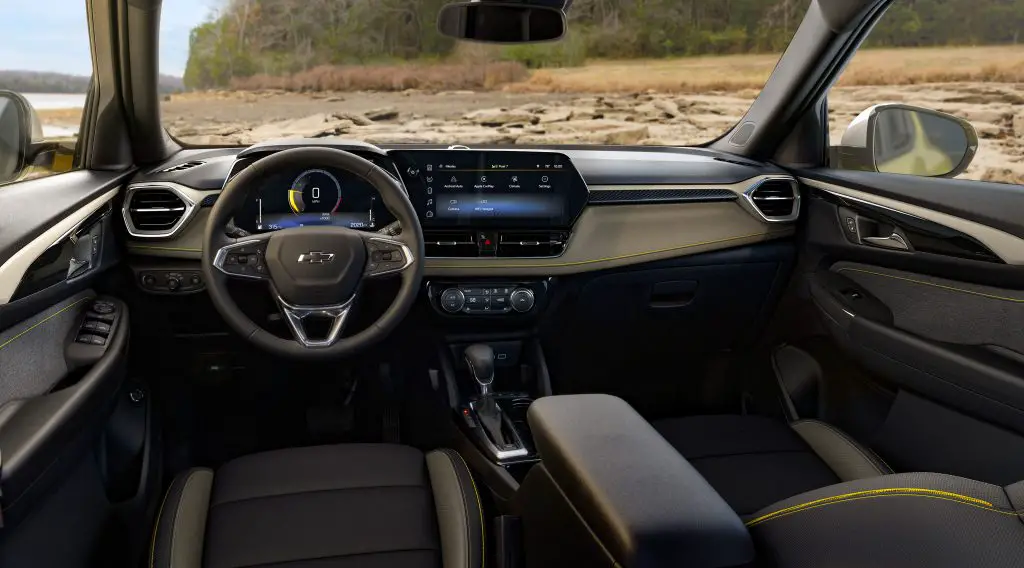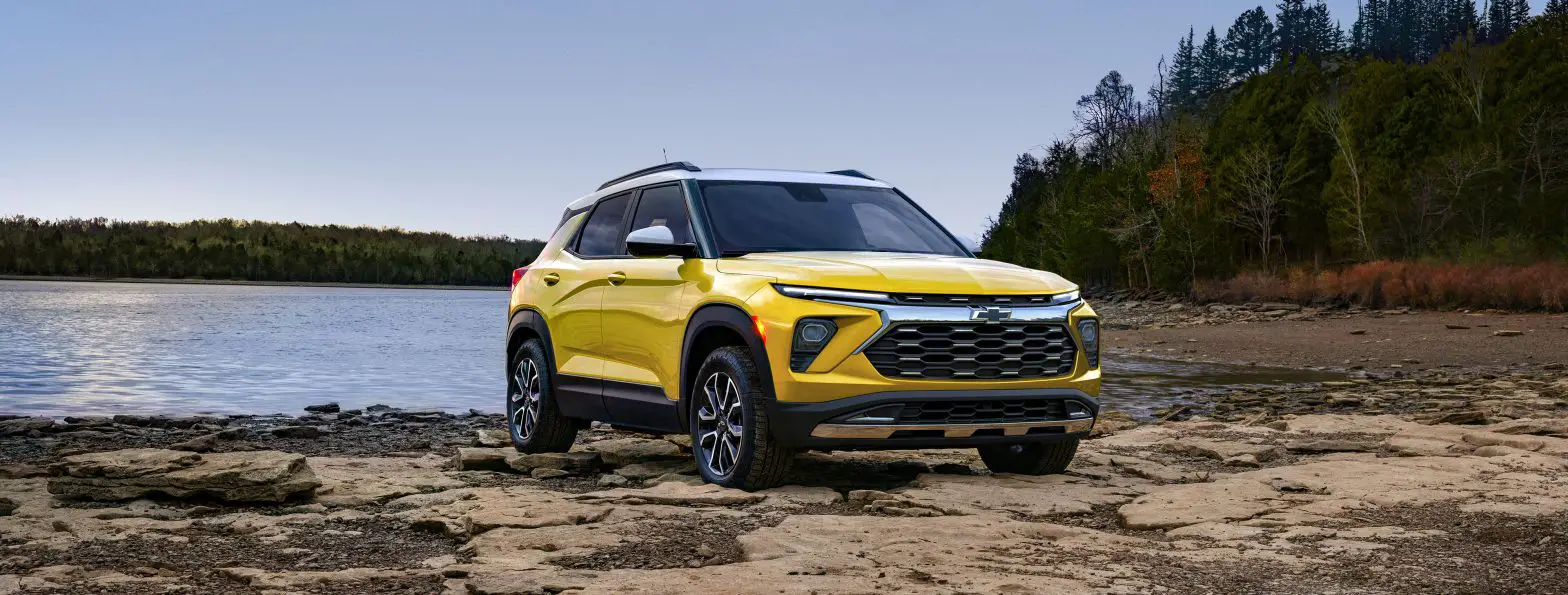The 2025 Chevrolet Trailblazer is set to receive a series of updates, reflecting a continuation of the model’s evolution within the competitive compact SUV segment. These updates are primarily focused on aesthetic modifications and a slight engine change to allow for E85 compatibility.
The Chevrolet Trailblazer typically appeals to a diverse demographic, ranging from young professionals to small families. Buyers often prioritize the Trailblazer for its practicality, affordability, and versatility. The compact SUV segment attracts those looking for a vehicle that offers the utility and space of an SUV, but with the maneuverability and fuel efficiency more akin to a sedan. The Trailblazer, with its compact size, is particularly appealing in urban environments where parking and navigating through tight spaces are common concerns.

2025 Chevy Trailblazer Updates
Deletions:
- The exterior colors Copper Harbor Metallic and Fountain Blue are being discontinued.
- The Summit White roof option will no longer be available.
- These deletions suggest refining the Trailblazer’s color palette, potentially in response to market demand and production optimization.
New Features:
A new exterior color, Marina Blue Metallic, is being introduced. This addition will refresh the vehicle’s color options for potential buyers looking for new and appealing hues.
Changes:
The 2025 Trailblazer will feature an updated engine: the ECOTEC 1.2L Turbo E85-compatible engine (LBP) is set to replace the previous ECOTEC 1.2L Turbo engine (LIH). This new engine is compatible with E85 fuel, a blend of gasoline and ethanol.
The Trailblazer was recently refreshed in 2024, so seeing only minor changes in 2025 is not surprising. Among the new changes in 2024 were a new interior featuring an 11-inch center display, an 8-inch digital gauge cluster, a new front fascia, new colors, and new wheel designs.
As such, the updates to the 2025 Chevrolet Trailblazer are targeted adjustments rather than a comprehensive overhaul. The introduction of a new color and the discontinuation of less popular options could be seen as an effort to keep the vehicle aligned with consumer preferences. The switch to an E85-compatible engine may reflect a broader industry trend towards offering more fuel-flexible vehicles, catering to a segment of consumers interested in alternative fuel options. These changes are consistent with the ongoing updates manufacturers make to their vehicle lineups to maintain competitiveness and relevance in the market.

